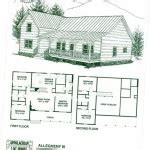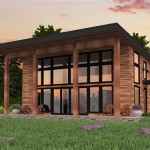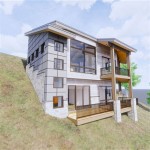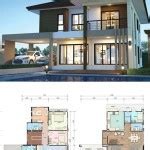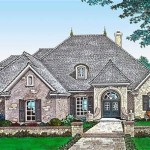Large Dog House Plans refer to detailed blueprints and instructions used to construct housing structures specifically designed to accommodate the needs of large dog breeds. These plans outline the materials, dimensions, and construction techniques necessary to create a safe, comfortable, and durable shelter for dogs that require extra space and protection.
Whether you’re building a new home for your beloved companion or seeking to upgrade their existing shelter, large dog house plans offer a wide range of options to suit your requirements. From rustic cabins to modern kennels, the availability of diverse plans ensures you can find the perfect design that complements your property’s aesthetics and meets the specific needs of your furry friend.
In this article, we’ll delve into the key considerations when selecting and using large dog house plans. We’ll explore various design options, essential features, and expert tips to help you create the ideal outdoor sanctuary for your canine companion.
When selecting and using large dog house plans, it’s essential to consider several key points to ensure you create a safe, comfortable, and durable shelter for your furry friend:
- Consider Breed and Size
- Choose Durable Materials
- Provide Proper Ventilation
- Ensure Adequate Insulation
- Plan for Drainage and Cleaning
- Consider Aesthetics and Location
- Follow Instructions Carefully
- Consider Expansion Options
By carefully considering these factors, you can select or create the perfect large dog house plan that meets the unique needs of your canine companion and enhances their outdoor experience.
Consider Breed and Size
The breed and size of your dog are the primary factors to consider when selecting or creating large dog house plans. Different breeds have varying needs in terms of space, insulation, and ventilation. For instance, large, active breeds like German Shepherds or Huskies require more room to move around comfortably and may need additional insulation to stay warm in colder climates.
Accurately measuring your dog’s height, length, and width will help you determine the appropriate size for their house. Ensure there is enough headroom for them to stand up without hitting their head and sufficient space for them to turn around and stretch out comfortably. As a general rule of thumb, the house should be at least 25% larger than your dog’s measurements.
Consider your dog’s age and mobility when planning the house. Older dogs or those with joint problems may benefit from a house with a ramp or stairs to access the entrance. Additionally, if you plan on having multiple dogs sharing the house, factor in the combined size and space requirements of all the occupants.
By carefully considering your dog’s breed and size, you can choose or design a large dog house plan that provides optimal comfort, safety, and well-being for your furry companion.
Choose Durable Materials
When selecting materials for your large dog house, durability is paramount. The materials should be able to withstand the elements, including rain, snow, wind, and sun, as well as the wear and tear caused by your dog’s activities.
- Pressure-treated lumber is a popular choice for dog houses because it is resistant to rot and decay, making it suitable for outdoor use. It is also relatively affordable and easy to work with.
- Cedar and redwood are naturally rot-resistant woods that are also durable and aesthetically pleasing. They are more expensive than pressure-treated lumber, but they may last longer and require less maintenance.
- Plastic or composite materials are also durable and easy to clean, making them a good choice for dog houses that will be used in wet or muddy areas. They are also resistant to chewing and scratching, making them a good choice for dogs that are prone to destructive behavior.
- Metal is a durable and weather-resistant material, but it can be more expensive and difficult to work with than wood or plastic. It is also important to choose a metal that is non-toxic and safe for dogs, such as stainless steel or aluminum.
In addition to the materials used for the exterior of the dog house, it is also important to choose durable materials for the interior. The floor should be made of a material that is easy to clean and disinfect, such as tile, linoleum, or concrete. The walls and ceiling should be made of a material that is moisture-resistant and easy to clean, such as drywall, plywood, or plastic.
By choosing durable materials for your large dog house, you can create a safe and comfortable shelter that will last for years to come.
Provide Proper Ventilation
Proper ventilation is essential for the health and comfort of your dog. A well-ventilated dog house will help to prevent the build-up of moisture, which can lead to mold and mildew growth. It will also help to regulate the temperature inside the house, keeping your dog cool in the summer and warm in the winter.
- Install vents in the walls and/or roof. Vents allow air to circulate throughout the house, preventing the build-up of moisture and stale air.
- Create a screened door or window. A screened door or window will allow fresh air to enter the house while keeping insects and other pests out.
- Avoid using solid materials for the walls and roof. Solid materials, such as wood or metal, can block airflow and trap moisture inside the house.
- Elevate the house off the ground. Elevating the house off the ground will help to improve airflow and prevent moisture from seeping into the house.
By providing proper ventilation, you can create a healthy and comfortable environment for your dog to enjoy.
Ensure Adequate Insulation
Adequate insulation is essential for maintaining a comfortable temperature inside your dog house, regardless of the outside temperature. In cold climates, insulation will help to keep your dog warm and prevent them from getting hypothermia. In hot climates, insulation will help to keep your dog cool and prevent them from getting heatstroke.
There are a number of different insulation materials that you can use for your dog house, including:
- Straw is a natural insulator that is inexpensive and easy to find. However, it is not very durable and can become moldy if it gets wet.
- Hay is another natural insulator that is inexpensive and easy to find. However, it is also not very durable and can become moldy if it gets wet.
- Fiberglass batts are a good choice for insulating dog houses because they are durable, moisture-resistant, and fire-resistant. However, they can be more expensive than other types of insulation.
- Foam insulation is a good choice for insulating dog houses because it is lightweight, durable, and moisture-resistant. However, it can be more expensive than other types of insulation.
When choosing insulation for your dog house, it is important to consider the climate in which you live. If you live in a cold climate, you will need to use a thicker layer of insulation than if you live in a warm climate.
To insulate your dog house, you will need to follow these steps:
- Measure the walls, roof, and floor of your dog house.
- Cut the insulation material to fit the measurements.
- Attach the insulation material to the walls, roof, and floor using glue, staples, or nails.
- Cover the insulation material with a layer of plywood or drywall.
By following these steps, you can ensure that your dog house is adequately insulated and that your dog is comfortable and safe, regardless of the outside temperature.
Plan for Drainage and Cleaning
Proper drainage is essential to prevent water from accumulating inside your dog house and causing mold and mildew growth. To ensure adequate drainage, you should:
- Elevate the house off the ground. This will help to prevent water from seeping into the house from the ground.
- Install a drainage system. A drainage system can be as simple as a hole in the floor of the house or a more elaborate system of gutters and downspouts.
- Slope the floor of the house. Sloping the floor will help to direct water towards the drainage system.
In addition to drainage, you should also consider how you will clean the dog house. A well-designed dog house will be easy to clean and disinfect, which is important for maintaining a healthy environment for your dog.
- Use materials that are easy to clean. Avoid using materials that are porous or difficult to disinfect, such as carpet.
- Provide easy access to the interior of the house. This will make it easier to clean the house and remove any debris or waste.
- Consider using a removable floor. A removable floor will make it easier to clean the house and replace the bedding.
By planning for drainage and cleaning, you can create a dog house that is both comfortable and healthy for your furry friend.
Consider Aesthetics and Location
Aesthetics
The aesthetics of your dog house are important because they can affect the overall look of your yard or property. If you have a specific style in mind for your yard, you should choose a dog house that complements that style. For example, if you have a modern yard, you might choose a dog house with a sleek and contemporary design. If you have a more traditional yard, you might choose a dog house with a more rustic design.
In addition to the style of your yard, you should also consider the color of your dog house. You want to choose a color that will complement the other colors in your yard. For example, if you have a lot of green in your yard, you might choose a dog house in a neutral color, such as brown or gray. If you have a lot of flowers in your yard, you might choose a dog house in a bright color, such as yellow or blue.
Location
The location of your dog house is also important. You want to choose a location that is both convenient for you and your dog. The location should be close to your house so that you can easily access your dog, but it should also be far enough away from your house so that your dog does not feel like they are being confined.
You should also consider the amount of sunlight and shade in the location you choose. You want to choose a location that gets plenty of sunlight in the winter, but also has some shade in the summer. This will help to keep your dog comfortable in all types of weather.
By considering both aesthetics and location, you can choose the perfect spot for your dog house that will be both functional and visually appealing.
Follow Instructions Carefully
Following the instructions included with your large dog house plans is of utmost importance to ensure a successful building process and the safety of your furry companion. Overlooking or misinterpreting even minor details can compromise the structural integrity, durability, and overall functionality of the dog house.
- Accurately Measure and Cut Materials:
Precise measurements are crucial for a proper fit and assembly of the dog house components. Carefully measure and mark the materials according to the plans, ensuring that each cut is accurate to avoid any discrepancies during assembly. - Pay Attention to Assembly Sequence:
The instructions typically outline a specific order in which the components should be assembled. Adhering to this sequence is essential to ensure the proper alignment and stability of the structure. Skipping or altering the assembly steps may lead to misalignment, instability, or even collapse. - Secure Connections Properly:
The strength and durability of the dog house rely heavily on the secure fastening of its components. Use the specified fasteners, such as nails, screws, or bolts, in the correct sizes and quantities. Ensure that all connections are tight and secure to prevent the structure from becoming loose or unstable over time. - Check for Squareness and Level:
Before completing the assembly, verify that the structure is square and level using a level or square tool. This ensures that the dog house sits evenly on the ground, preventing uneven wear or potential tipping hazards for your dog.
By meticulously following the instructions and paying attention to these critical points, you can construct a safe, sturdy, and comfortable dog house that will provide your beloved canine companion with a cozy and protective shelter for years to come.
Consider Expansion Options
When selecting or designing large dog house plans, it’s prudent to consider potential expansion needs in the future. Life circumstances, family dynamics, or changes in your dog’s size or mobility may warrant the need for a larger or modified living space for your furry companion.
Incorporating expansion options into your initial plans allows for seamless adjustments to the dog house without extensive renovations or the need to build an entirely new structure. Here are key points to consider when planning for expansion:
- Modular Design:
Opting for a modular dog house design provides the flexibility to add or remove sections as needed. Modular components can be easily connected or disconnected, allowing you to expand the living space without compromising the structural integrity of the house. - Adaptable Floor Plan:
Design the floor plan with potential expansion in mind. Consider leaving some sections of the house unfinished or adaptable, allowing for future additions of rooms or features, such as a porch, storage area, or an attached run. - Provision for Extensions:
Plan for future extensions by incorporating structural reinforcements or designated areas where additional sections can be seamlessly added. This foresight ensures that the dog house can be expanded without compromising its stability or requiring major alterations. - Removable Walls or Panels:
Consider using removable walls or panels in the design. This allows for easy modification of the interior layout, providing options to enlarge or reconfigure the space as per your evolving needs.
By considering expansion options during the planning phase, you can create a versatile and adaptable dog house that can accommodate your dog’s changing needs and requirements over time, ensuring their comfort and well-being throughout their life.










Related Posts

